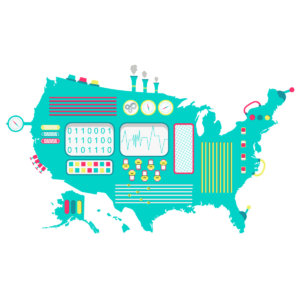From the Archives: How to Reshore Manufacturing Successfully
In the new U.S. political climate, more manufacturing companies might be weighing bringing operations back to the United States that they had previously sent abroad. This 2014 article from MIT Sloan Management Review details some of the challenges in “reshoring” American jobs.
Now that the Trump administration has taken charge in Washington, its stated priority of keeping and bringing back American factory jobs has taken center stage. Trump said throughout the campaign that he would rewrite the North American Free Trade Agreement (NAFTA) to make U.S. manufacturing more competitive — and less than a week into his tenure, he announced that he wants to impose a 20% tax on imports from Mexico. Trump has also taken to publicly shaming companies such as Carrier, Toyota, and General Motors with tweets condemning their plans to produce goods for the U.S. market outside of the United States.
One short-term result? Companies that are thinking about shutting down U.S. plants may think twice, at least about the timing of such an announcement. Justin Wolfers, a professor of economics and public policy at the University of Michigan, noted in an essay in The New York Times in January that even though it is a “near certainty that the vast majority of companies won’t end up in Mr. Trump’s crosshairs,” CEOs may fear a hit to their personal reputations. The result, Wolfers writes, is that “few have been willing to announce the sort of plant closings that might put them in the harsh glare of the president’s spotlight.”
Other companies may feel pressured to consider bringing assembly jobs back to the United States that they had previously sent abroad. The “reshoring” of American jobs isn’t new. It’s an option some companies pursue after experiencing the challenges of overseas supply chain and logistics costs or higher-than-expected labor expenses in emerging economies. Returning to a “Made in the U.S.A.” model might become sweeter still in 2017, if the Trump administration offers tax breaks or other incentives for manufacturers who choose domestic production for their operations.
Get Updates on Transformative Leadership
Evidence-based resources that can help you lead your team more effectively, delivered to your inbox monthly.
Please enter a valid email address
Thank you for signing up
Companies weighing this option would do well to review a 2014 MIT Sloan Management Review article, “What It Takes to Reshore Manufacturing Successfully,” by Willy C. Shih, the Robert and Jane Cizik Professor of Management Practice at Harvard Business School and a director of Flextronics International Ltd. “While the macroeconomic data on comparative labor and factor costs may be compelling, the actual process of reshoring — bringing assembly work back from abroad — is hard work,” Shih writes.


Comment (1)
bestways to